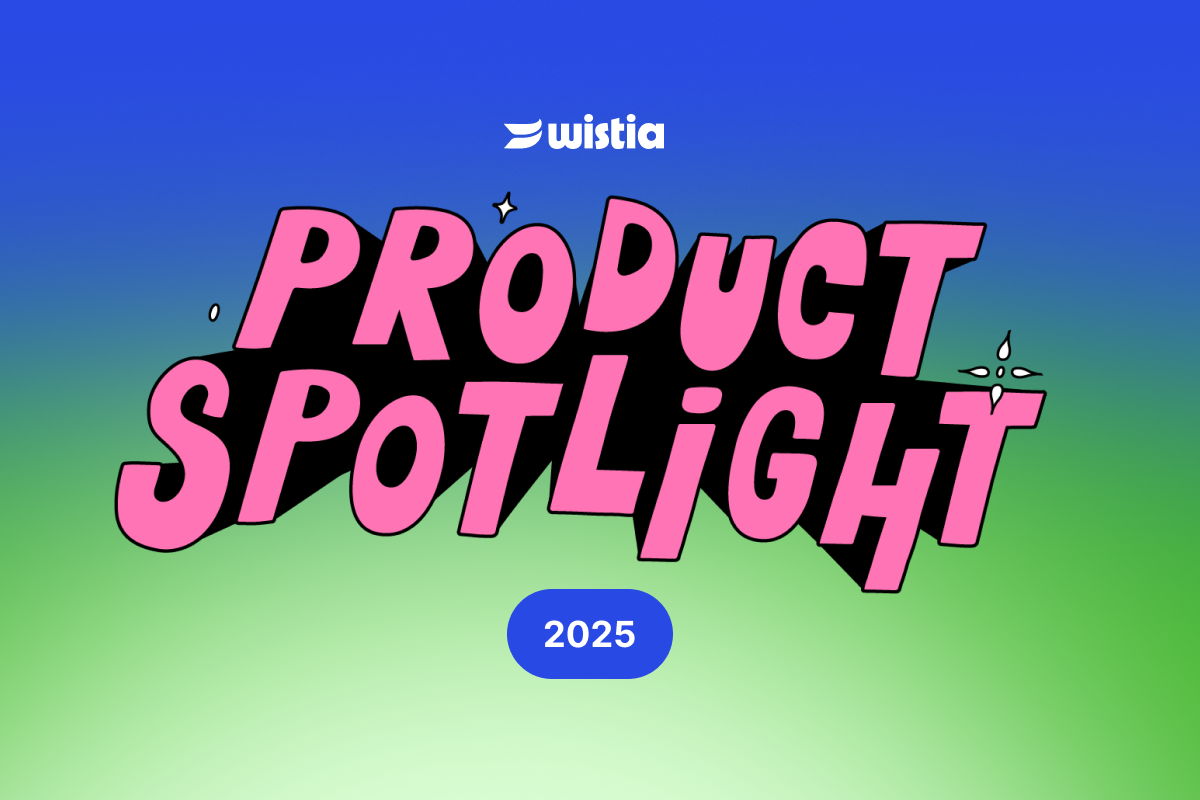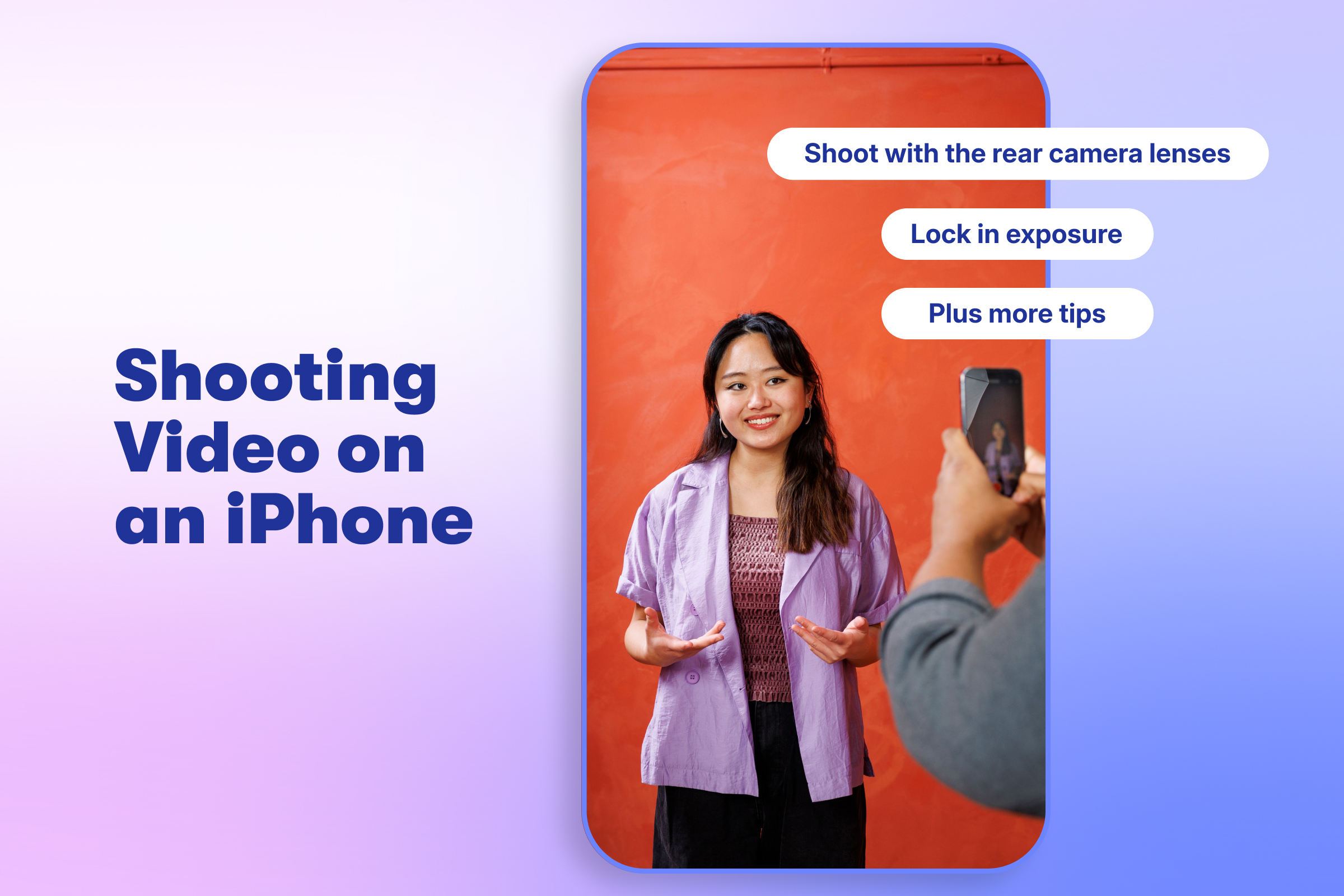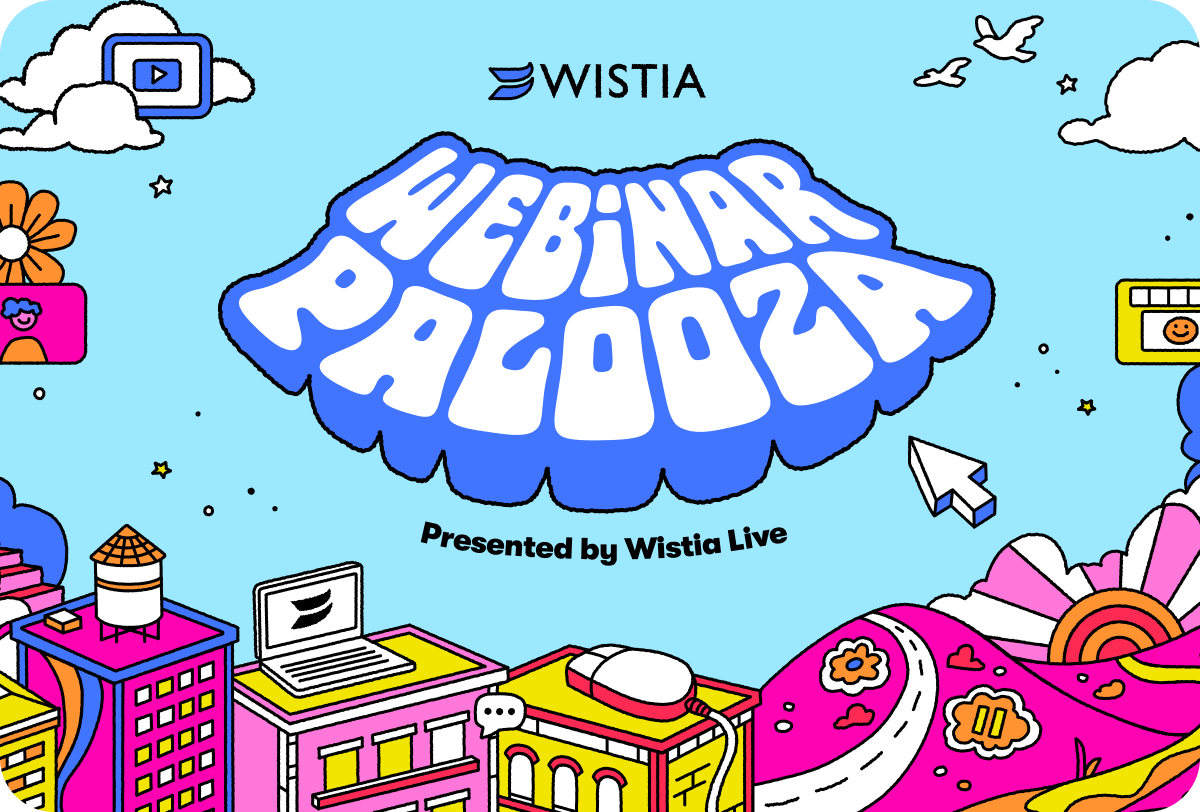What Podcasts Can Teach Us About Making a Successful Video Series
June 11, 2019
Topic tags
Whether it’s your coworker, your best friend, or a stranger on the subway, we bet you’ve heard someone talking up a storm about the podcast they’ve been listening to lately. After all, according to Podcast Insights, there are currently over 700,000 podcasts and over 29 million episodes as of April 2019.
What is it that makes this media format so engaging and successful? And how do podcasters keep fans coming back for more? When it comes to making branded shows for your business, whether that’s a long-form video series, a weekly show, or even a documentary, there are many lessons to be learned from the success of podcasts that you can apply to your own content. From identifying specific niches to creating communities of loyal followers, read all about how podcasts can inform your own strategy for building engaged audiences.
They cater to a niche audience
Do you find the true crime genre fascinating? If so, you could tune in to Criminal, Serial, Dr. Death, Sword and Scale, or My Favorite Murder, to name a few. Are business and technology more your speed? Check out Reply All, Freakonomics Radio, Planet Money, or TED Radio Hour. What about pop culture? Comedy? Relationships? Sports? Whatever you’re passionate or curious about, there’s a podcast out there for you. And that’s because many of the podcasts that exist today were created with a specific audience in mind.
While it may sound contradictory, narrowing your audience can actually help you create better content. Knowing your audience inside and out is key whether you’re creating a branded show, a podcast, or even writing a blog post (we’re getting meta here). Without knowing who you’re trying to reach, creating content is like throwing an entire plate of spaghetti at a wall and hoping it all sticks.
“Without knowing who you’re trying to reach, creating content is like throwing an entire plate of spaghetti at a wall and hoping it all sticks.”
Don’t believe us? Even big brands are taking this audience-centric approach to content creation. In 2018, PR Week reported that Home Depot, Wal-Mart, Trader Joe’s, and Jack Daniel’s were among well-known brands developing podcast strategies to appeal to niche audiences. Home Depot created Give Me an H to give listeners (potential job-seekers) a peek inside the retailer’s culture, and Trader Joe’s Inside Trader Joe’s had their employees answer questions from the grocery store chain’s biggest fans.
How it works for branded shows
Alison MacAdam at NPR was spot on when she said, “It’s easy to get so excited about an idea that we coast on our own enthusiasm. We forget that our project lives or dies based on listeners’ enthusiasm.” That same principle applies to creating branded content for your business. Identifying a niche audience will help you develop a stronger creative strategy that supports your brand. By taking insights from your audience, understanding what problems they face, and uncovering what they’re most passionate about, you can create a video series that delivers value, resonates with the right people, and helps build brand affinity.
They create an engaged community
Podcasts also have the potential to foster loyal fan-bases of like-minded listeners. Over time, your listeners may turn into subscribers who are eager for new episodes or even exclusive, behind the scenes content. Best case scenario? They share their enthusiasm about your content with their friends, family, and people in their network.
In online forums, Facebook groups, and other dark corners of the web, these passionate listeners share their thoughts, opinions, and sometimes even conspiracy theories about podcasts long after the episodes have aired. And although communities tend to form organically by podcast superfans, having podcast hosts encourage listeners to ask further questions or interact with them on other social media platforms is a great way to keep listeners engaged.
Another way podcasts build community is by giving listeners an identity to rally behind. Many successful podcasters have taken a page from the pop-culture book by giving their avid fanbases nicknames. Just like Lady Gaga and her “Little Monsters,” Beyoncé and her “BeyHive,” Taylor Swift and her “Swifties," podcasters with big followings have made it easier for fans to identify themselves and one another. Remember that true crime podcast, My Favorite Murder? Well, if you’re a fan, then you would be called a “Murderino.” Are you a fan of Dax Shepard’s popular interview podcast, Armchair Expert? Then you might refer to yourself as an “Armchairee.” Whatever the case may be, podcasts have a way of unifying people and building a strong community among their fans.
“What’s even more impressive about podcasts and their ability to create superfans, is the fact that these folks are willing to come out in droves and actually pay to see live recordings of the shows. And I would know! As a self-proclaimed podcast fanatic, I’ve probably seen at least five podcast recordings in real life this year alone. It really speaks to the power of this medium and the ability it has to rally folks with similar interests together.”Jenny Mudarri - Associate Director, Content Marketing at Wistia
How it works for branded shows
If podcasts can build their own engaged communities, so can your business' branded shows. Once you’ve created your content, try sharing it with your niche online where they like to hang out, whether that’s on Facebook, Reddit, Quora, or elsewhere. Already have a social media following? When you’re promoting your content, consider creating a hashtag to go accompany your series whenever you share it. You could also even host some online events like a live Q&A to grow your community and spread the word about your content. Here at Wistia, we held a Facebook Live with the creators of our first-ever original series, One, Ten, One Hundred, and saw a ton of engagement from fans of the content.
Once you feel confident that you’ve got some fans by your side, why not try hosting an event for them in real life? We put on a screening for One, Ten, One Hundred at a local movie theatre and invited community members to attend so they could mix and mingle with one another (and watch the series on the big screen). Create a Facebook event or send out an Eventbrite link and invite your audience to attend. Putting on an in-person event obviously requires a bit more time and resource than doing something online, but creating a strong sense of community among current and new followers of your brand will almost always pay off in the long run.
They build demand by releasing content on a schedule
Popular TV shows on cable and streaming services like HBO have mastered the art of getting people excited to watch their favorite programs and escape from the real world — and podcasts have followed suit. Traditionally, shows on cable TV have been able to hook viewers and keep them coming back for more on a weekly basis by releasing episodes at the same exact time every single week. How many people do you know that cleared out their Sunday night schedules so they could watch the latest episode of Game of Thrones without fail? Services like Netflix and Hulu changed the game a bit by releasing full seasons of shows all at once for people to binge-watch, but whatever the case may be, the fact remains the same — we are all creatures of routine.
Podcasters have picked up on both of these timing tactics when it comes to releasing their content because they know it builds routine among their listeners. Some podcasts are released weekly on Monday mornings, others every other Thursday, and some are released all at once for people to binge-listen to at their own pace, just like those Netflix shows. One technique is not better than the other, but what matters most is that your release schedule is both consistent and relevant to your content. For example, you wouldn’t release a news podcast all at once because the content is timely, so just keep those factors in mind as well.
“One technique is not better than the other, but what matters most is that your release schedule is both consistent and relevant to your content.”
While consistency is super important for building an audience, remember that the quality of the content is paramount. In his article “When to Release Your Podcast,” Jon Street said, “If you want to do a weekly podcast but aren’t quite sure you can do it well, start with every-other-week. Do that consistently for a period, then once you get your bearings, increase your frequency. It’s always better to have fewer well-thought out episodes than more “wait, what did I just listen to?” kinds of episodes." So, while consistency is important, the quality of your content should also be a key factor when deciding on your release schedule.
How it works for branded shows
Just like podcasts and your favorite TV shows, it’s important to develop a strategy for releasing your business’s branded shows. Your release schedule should always be based on the type of content you’re creating, so don’t pick an arbitrary schedule just for the sake of it. For example, we released One, Ten, One Hundred all at once because it was a story that was told from start to finish as opposed to a series that covered different topics on each episode. It made sense to us to give people the option to watch the one hour and forty-two-minute docu-series all at once if they wanted to. If they didn’t have time to do that, they could always go back and pick up right where they left off, but it didn’t make sense to drag out the release over a four week period.
If your video series or show involves time-sensitive topics, like current news and events, chances are you’ll want to release that content on a weekly basis (you know what they say, here today, gone tomorrow). This same principle also applies for shows that feature different guests on each episode. You may want to release the episodes one by one to build demand for more content week after week. Even if you filmed the series all in one day, your audience will never know, and that doesn’t mean you have to release your content all at once. Distribute your episodic content whichever way you think will work best to stay consistent and aligned with your creative strategy.
Start applying these techniques to your own content
For businesses thinking about creating a video series to help build their brands and grow their audiences, there’s a lot to be learned from the world of podcasts. Don’t try and reinvent the wheel — we can take many of the lessons podcasters have learned about growing a dedicated fanbase and apply those same principles to creating branded shows for businesses.
Start by identifying a niche audience and then find a topic or theme that will resonate with them on a personal level. Then, work on fostering an engaged community of fans once you ship your content out into the world. And finally, make sure you don’t brush off the importance of a strategic release schedule. If you’ve created a video series and have seen success so far, we’d love to hear more about how you got started and what informed your strategy in the comments below!






